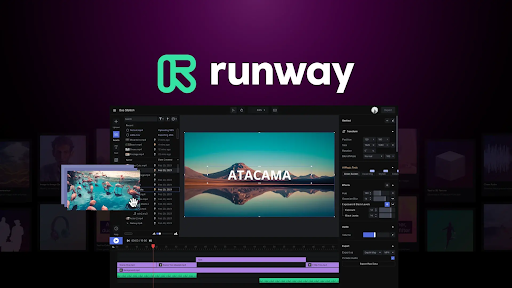AI-driven image tools are transforming the creative landscape, offering solutions for image generation, editing, enhancement, and analysis. With so many options available, choosing the right tool depends on your specific needs—whether you're a designer, marketer, developer, or hobbyist. Here's an in-depth look at the leading AI imagery tools, their strengths and weaknesses, and how to choose the best one for your use case.
Top AI Tools for Image Generation and Editing
1. DALL·E 3 (OpenAI)
Best for: Text-to-image generation, creative and surreal imagery.
✅ Strengths:
Generates highly detailed and creative images from text prompts.
Understands complex and nuanced descriptions.
Integrated with ChatGPT for easier prompt refinement.
API available for developers.
Mobile-compatible via ChatGPT app.
❌ Weaknesses:
Limited control over fine details in generated images.
Requires a subscription (ChatGPT Plus) for full access.
🔹 Use Cases: Art, marketing, concept design, and creative projects.
🔹 Real-World Application: Used by content creators for book illustrations and advertising campaigns.
2. MidJourney
Best for: Artistic and stylized image generation.
✅ Strengths:
Produces highly aesthetic, painterly, and stylized images.
Great for fantasy, surreal, and abstract artwork.
Active community and frequent updates.
❌ Weaknesses:
Requires Discord for access, which can be less user-friendly.
Limited photorealism compared to some competitors.
🔹 Use Cases: Digital art, concept art, and creative exploration.
🔹 Real-World Application: Used by indie game developers for concept art and character design.
3. Stable Diffusion (Stability AI)
Best for: Customizable and open-source image generation.
✅ Strengths:
Open-source, allowing for extensive customization and local deployment.
Supports fine-tuning and advanced control over image generation (e.g., ControlNet, DreamBooth).
Can generate photorealistic images with the right models.
❌ Weaknesses:
Requires technical knowledge for advanced customization.
Running it locally demands a powerful GPU, increasing hardware costs.
🔹 Use Cases: Research, custom AI projects, and photorealistic imagery.
🔹 Real-World Application: Used by VFX studios for generating textures in 3D modeling.
4. Adobe Firefly
Best for: Professional editing and integration with creative workflows.
✅ Strengths:
Seamlessly integrates with Adobe Creative Cloud (Photoshop, Illustrator, etc.).
Focuses on ethical AI training (uses licensed or public domain data).
Great for editing, enhancing, and expanding existing images.
❌ Weaknesses:
Less focused on standalone image generation compared to DALL·E or MidJourney.
Some features are still in beta.
🔹 Use Cases: Professional design, photo editing, and marketing.
🔹 Real-World Application: Used by advertising agencies for high-quality ad creatives.
5. Runway ML
Best for: Video and image editing with AI.
✅ Strengths:
Offers a wide range of tools for image and video generation/editing.
User-friendly interface with no coding required.
Supports advanced features like green screen removal and style transfer.
❌ Weaknesses:
Some features require a paid subscription.
Less focused on standalone image generation.
🔹 Use Cases: Video production, multimedia art, and creative editing.
🔹 Real-World Application: Used by filmmakers for AI-driven visual effects.
6. DeepArt.io / DeepDream Generator
Best for: Style transfer and artistic filters.
✅ Strengths:
Transforms images into artworks using famous art styles.
Easy to use and beginner-friendly.
❌ Weaknesses:
Limited to style transfer, not full image generation.
Less control over output compared to other tools.
🔹 Use Cases: Artistic projects, social media content, and personal use.
🔹 Real-World Application: Used by content creators to stylize profile pictures and social media posts.
7. Artbreeder
Best for: Collaborative and evolutionary image creation.
✅ Strengths:
Allows users to "breed" images by combining traits from multiple images.
Great for creating portraits, landscapes, and abstract art.
❌ Weaknesses:
Limited to specific types of imagery (e.g., faces, landscapes).
Less control over fine details.
🔹 Use Cases: Character design, world-building, and collaborative art.
🔹 Real-World Application: Used in AI-driven character creation for game design.
8. Canva AI (Magic Media)
Best for: Quick and easy image generation for non-designers.
✅ Strengths:
Integrated into Canva’s user-friendly design platform.
Ideal for creating social media graphics, posters, and presentations.
❌ Weaknesses:
Limited customization and control compared to standalone AI tools.
Output quality may not match specialized tools like DALL·E or MidJourney.
🔹 Use Cases: Social media, marketing, and quick design projects.
🔹 Real-World Application: Used by small businesses for branding and promotional materials.
Comparison Table
| Tool | Best For | Strengths | Weaknesses | API | Mobile Compatibility |
|---|---|---|---|---|---|
| DALL·E 3 | Text-to-image, creative prompts | High detail, understands complex prompts | Limited fine control, requires subscription | ✅ | ✅ |
| MidJourney | Artistic, stylized imagery | Aesthetic, painterly outputs | Requires Discord, less photorealistic | ❌ | ❌ |
| Stable Diffusion | Customizable, open-source | Photorealistic, highly customizable | Requires technical knowledge, high GPU cost | ✅ | ❌ |
| Adobe Firefly | Professional editing, workflows | Ethical, integrates with Adobe tools | Still evolving, less standalone | ✅ | ✅ |
| Runway ML | Video and image editing | User-friendly, multimedia focus | Some features require subscription | ✅ | ✅ |










.jpg)


No comments:
Post a Comment